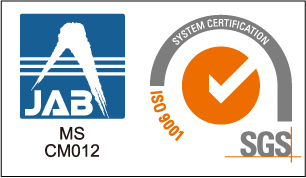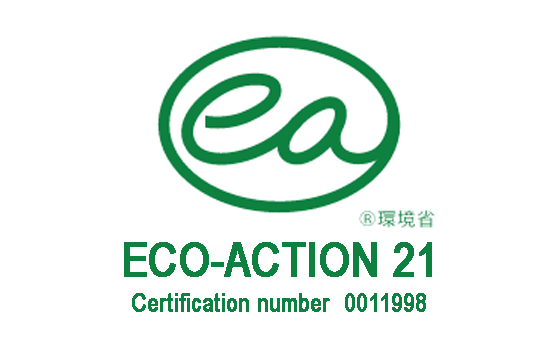Vacuum FAQs
What is the definition of vacuum?
The word "vacuum" is usually used from the usual, but as a field it is often used in the fields of food, chemistry and industry.
The word "vacuum" is used in various fields such as vacuum insulation and vacuum cooking methods, and it seems that you can only think of "a state without air" if you actually think of a vacuum.
About Japanese Industrial Standards (JIS Z 8126) about vacuum
Specific space conditions filled with gas below atmospheric pressure
It has become.
That is the definition of "vacuum" if it is an enclosed space at a pressure lower than the pressure we normally live in.
What is barometric pressure?
Atmospheric pressure, like water pressure, means that the force that squeezes an object works from all directions.
What is the unit of pressure?
Pa (pascal) is the unit of pressure and stress of SI (international unit system).
1 Pa = 1 N / m 2: When a force of 1 Newton is applied per square meter
One atmospheric pressure = 1.013 × 10 5 Pa = 101300 Pa
One atmospheric pressure will be "101,300 Pa".
In the performance of the vacuum pump, the ultimate pressure is 10Pa, but it does not reach there, but why?
As a possible
1)In the case of released gas
2)In the case of oil contamination in the pump
3) In the case of contamination in the chamber
4) In the case of contamination of the pipe
5)In the case of contamination of the vacuum gauge
6)In the case of micro leak
The above is mentioned.
From the definition of vacuum, can it be said that a high place from the ground where the air becomes thin to the outside of the atmosphere is also a vacuum?
The vacuum term JIS Z 8126 defines the following pressure zone categories.
Low vacuum: Pressure over 100Pa (altitude about 10km)
Medium vacuum: Pressure 100 to 0.1 Pa (altitude about 10 to 100 km)
High vacuum: Pressure 0.1 Pa to 10 -3 Pa (Altitude approx. 100 to 500 km)
Ultra high vacuum: Pressure 10-4 Pa or less (altitude about 500 km or more)
Compared to the Earth's radius of about 6,400 km, an ultra-high vacuum can be obtained only a few hundred kilometers above, and we must consider vacuum issues on the very surface of the Earth.
However, in reality the sky above nature is not so much called vacuum.
It is not a "specific space" in JIS, so low pressure is not vacuum.
"Vacuum technology", which combines vacuum and technology, uses a vacuum pump to think of a low pressure condition created by humans as a vacuum.
Do you need any qualifications to handle vacuum?
There is no particular qualification required.
By the way, qualification is necessary to handle pressurization relations.
The unit of vacuum is pressure (Pa), why do you think of "molecular density"?
The vacuum is very low as pressure, and there is not much difference between 10 -3 Pa and 10 -5Pa as pressure.
Therefore, it is impossible to capture a vacuum as pressure, and it is necessary to replace it with another scale, which is "molecular density".
Vacuum is a condition below atmospheric pressure, but because there is a gas there, it can be seen as a big difference if you look at how much the molecule is in a certain volume.
We use the "Avogadro constant", which has long been known, to calculate molecular density.
This allows us to calculate how many molecules exist under a certain pressure.
When using vacuum to process various materials, the surface must always be clean.
It is important to reduce the number of gas molecules by keeping the pressure as low as possible, and at that time the "molecular density" is used.
What is the Avogadro constant?
The Avogadro constant is a constant that indicates the correspondence between 1 mol of substance and the number of particles (molecules / atoms) that compose it.
It is known that 6.02 × 10 23 molecules exist in 22.4 liters of air.
Since the atmospheric pressure is 10 5 Pa, this indicates the number of molecules present under a certain pressure.
What is the mean free path?
In a closed space, gas molecules are packed, and when it has heat, it is constantly flying around, and when it collides with the next molecule, the direction is repeating bending.
It is the "average free path" to measure how straight a gas molecule that moves in this way flies.
Since the gas molecules are not visible, they are not actually measured in length, but can be obtained as a calculation in the gas molecular motion theory.
The lower the pressure (the smaller the number of gas molecules), the longer the mean free path since gas molecules can fly straight.
At a normal atmospheric pressure of 10 5 Pa, the mean free path only vibrates in situ when viewed in a short time at 700 A, but at 10 1 Pa 0.7 mm, at 10 -2 Pa 70 cm, 10 -3 Pa Then it will be 7m.
If the width and height of the device are at most 1 to 2 m, and the mean free path is 70 cm to 7 m, the gas molecules ejected from the crucible will fly straight to the substrate.
"Knowing the length of "average free travel" is very important when thinking about what to use a vacuum device for in practice, as it is also a value that is involved in the design of the device.
What is the monolayer formation time?
"A "monolayer" is a layer about the diameter of molecules that molecules form on the surface (or interface) of a liquid or solid, called a "monolayer" or "monolayer", and the surface of a substance is a gas molecule. It is "monolayer formation time" that represents the covering time.
Pressure is the force that a gas molecule gives to a partner when it hits and bounces back to a wall etc. The total force of the gas molecule that exists is pressure.
The gas molecules that hit the wall bounce, but the first layer on the surface of the material has molecules attached to it.
Since the size of the gas molecule is known, the time until the molecule covers the surface of the material can be calculated.
At 10 5 Pa atmospheric pressure, it takes only 3 x 10 -9 seconds, and when the pressure is further reduced, it takes 0.3 seconds at 10 -3 Pa and 8 hours at 10 -8 .
After eight hours, surface analysis can show the true surface appearance before the substance is covered with gas molecules, and when forming a film on the substance, it can create a clean film that does not contain gas molecules.
Also, if you make a film very slowly under low pressure, you can get a clean single crystal.
In the performance of the vacuum pump, the ultimate pressure is 10Pa, but it does not reach there, but why? (Part 2)
Even if the cause of the above is eliminated, the decompression will plateau to some extent.
It means that gas molecules come from somewhere, but from where?
As the gas molecules filled in the enclosed space are discharged, they come off the material surface of the container.
The materials used for the vacuum system should be as low as possible to adsorb gas molecules.(Attachment amount of material)
In actual devices, more molecules are ejected than geometrical surfaces, but time can be calculated.
That is because the surface area of the gas molecule level (including fine asperities) is larger than the surface area of the appearance, and this is one of the factors that must be known as "the real surface area".
Why is plasma used for vacuum film formation?
Plasma is a very high energy state in which electrons constituting the atoms and molecules of the gas are separated from the nucleus and ionized into positive ions and electrons (ionized gas) by discharge in vacuum.
Three plasma generation methods
1)Thermal ionization
2)Photo ionization
3)Discharge ionization
Vacuum technology uses "discharge ionization".
When a high voltage is applied to a low pressure gas of 10 3 Pa or less, dielectric breakdown occurs and a stable spark discharge (glow discharge) occurs at a low current.
When you apply negative high energy to the target, the positive ions of plasma collide with the target, and the constituents of the material can be ejected to form a thin film on the surface of the substrate.
Also, when vapor is passed into the plasma, part of it is ionized, and when it is drawn into the substrate at high voltage, a highly adhesive film is formed.
Other plasmas are widely used in vacuum technology fields such as film formation, processing and melting of metals.
What is the role of heat in a vacuum?
Heat transfer in low pressure vacuum is mainly radiation and heat transfer.
Among them, radiation is transmitted as electromagnetic waves, and there is no involvement of gas molecules, and it is heat conduction that affects it.
The amount of heat transferred to a certain period of time is proportional to the temperature gradient between high and low temperatures, and the proportionality constant is called "thermal conductivity".
When the pressure is high, the heat that the gas molecules receive from the wall of the container is kinetic energy due to the collision of the gas molecules.
The heat of delivery is transferred as-, but if it is higher than a certain pressure, it depends on the structure and type of gas regardless of the molecular density (pressure).
Under low pressure (under "free molecule conditions") where collisions between gas molecules can be ignored compared to collisions with the wall of the vessel, heat received from the hot wall will be directly transferred to the cold wall, and the wall of the gas molecules The thermal conductivity is proportional to the pressure, depending on the frequency of collision with the gas, so-called pressure (molecular density).
Is there a vacuum for freeze-drying?
The most familiar food is freeze-dried, which has been firmly established in the world, but freezing and drying water is called "freeze-drying."
It is water that boils at 100 ° C at atmospheric pressure, but when it is vacuumed, the boiling temperature drops and it evaporates as it is frozen in vacuum using the properties of water that can only exist as solid and gas at low pressures below 610 Pa (Sublimation) Vacuum is used to "freeze drying".
This "freeze-dry" can be dried without heating,1 so it can prevent changes in color and components due to heat,2 cannot easily be corroded by a small amount of water, can be stored for a long time, and 3 maintains its frozen state,4 After drying, it becomes sponged (porous) and returns to its original shape with water and hot water.
The method is to freeze the object at -40 ° C, decompress the pressure in the container to 4-100 Pa, then heat at 30-60 ° C and dry.
Although this method is applied to food and medicine, the technology called "vacuum foaming" is used to manufacture sponge-like chocolate that melts in the mouth.
If you put chocolate in a vacuum container that mixes and dissolves fine bubbles beforehand, the bubbles will expand and become like a sponge.
Vitamin in vacuum?
When the pressure is high like atmospheric pressure, the water molecules that fly out of the surface collide with the gas molecules and return to the water surface even though the water evaporates, but under vacuum, there are few gas molecules and the molecular weight that jumps out into space The lower the pressure, the lower the "boiling point", as the result is more evaporation.
When you make something from two or more liquid substances, the materials you want to make and the raw materials will be mixed, but if you evaporate from the one with the low boiling point using the temperature difference of evaporation, you can take out the high purity ones can.
The separation process that uses this temperature difference of evaporation is called "distillation".
At boiling point under atmospheric pressure, substances that are unstable at high temperatures are decomposed and polymerized and cannot be purified by distillation.However, by evacuating the inside of the purifier, the boiling point is lowered, and vitamins and other unstable substances can be distilled at relatively low temperatures, so that deterioration by heating does not occur easily, and there is little oxygen, so decomposition and polymerization by oxidation are also prevented. It is possible.
This is called "vacuum distillation", and a pressure of 100 to 0.4 Pa and a temperature of several tens to 280 ° C are often used.
However, since evaporation under vacuum occurs at the part in contact with the vacuum of the liquid surface, it is difficult to evaporate to the bottom if the liquid layer is thick, so make the liquid layer thinner by a centrifuge etc. and make the difference between heating temperature and boiling point The method of reducing is used.
Foods and medicines that use vacuum distillation include:
○Vitamin A · Vitamin B
○Emulsifier monoglyceride
○From fish extract oil EPA, DHA, squalane
○From animal oil lanolin alcohol as moisturizer
Are you full of "vacuum-formed" products around you?
"Thermoplastics" are used as materials for everything from tray packs for daily necessities to toys, electrical parts and automobile parts.
Representative ones are ABS, AES, PMMA, PC, PP, PE, HIPS, PET, PVC, etc. Recently, composite multilayer materials and silk-printed materials are also used.
As a manufacturing method of the product, both sides of the plastic board are heated and heated by a heater and set in the mold. The air in the gap between the mold and the plastic plate is immediately evacuated and brought into close contact with the small hole of the mold.
プSince the plastic plate solidifies after cooling, stop the vacuum evacuation, remove it from the mold, and cut the excess part to complete the product.
This method is called "vacuum forming", and mass production is possible if a series of processes are carried out while continuously supplying the material as a roll sheet or film.
Vacuum molding has a low molding pressure, so it is possible to use materials other than molds, such as resin, and it is inexpensive, so it is suitable not only for mass production but also for high-mix low-volume production.
Is it vacuum for air conditioning?
Imagine the absence of gas when speaking of vacuum, but if you define vacuum below atmospheric pressure, vacuum is used for familiar products.
In modern, highly classified living spaces, the use of indoor combustion equipment sucks dirty air and the number of people in the room increases, and oxygen concentration decreases at bedtime when there are few ventilation opportunities.
In order to compensate for such an environment that is likely to become an oxygen deficient body for modern people, an air conditioner product has the function of maintaining the same comfortable space as the natural environment by generating high oxygen concentration with the outdoor unit of the air conditioner and supplying it indoors. There is.
The oxygen source is simple and consists of a vacuum pump and an oxygen-enriched membrane. Oxygen-rich membranes made of organic polymers utilize the difference in molecular weight that passes through the membrane, that is, the difference in the rate at which molecules dissolve in the membrane rather than the size of the molecule.
The air drawn by the pump diffuses into the membrane when it penetrates the oxygen-rich membrane, but the molecular oxygen and nitrogen molecules diffuse differently, so the proportion of nitrogen in the air decreases and the proportion of oxygen increases.
A normal gas composition of approximately 21% oxygen and 78% nitrogen is supplied to the room at approximately 30% oxygen and 70% nitrogen.
nm (nanometer) thin film formation? ?
The vacuum technology is also used for the core technology "thin film formation" that depends on the development of modern technology.
When I think of thin film products, there are aluminum wheels and wraps close to me, but since they are made by stretching the material, the thinness of about 10 μm is the limit.
Thin film technology is an essential key technology in the field of nanotechnology such as biotechnology, computers, microphone machines, etc. However, its thinness cannot be produced by physical stretching with an extremely thin film of μm to nm.
There is an advanced technology in which materials are separated at the molecular level in vacuum and then laminated.
The application range of vacuum thin film formation is so wide that it is no exaggeration to say that it is a driving force to create products in the state of the art.
We will write at any time if you have any inquiries about the product, so please refer to it.






